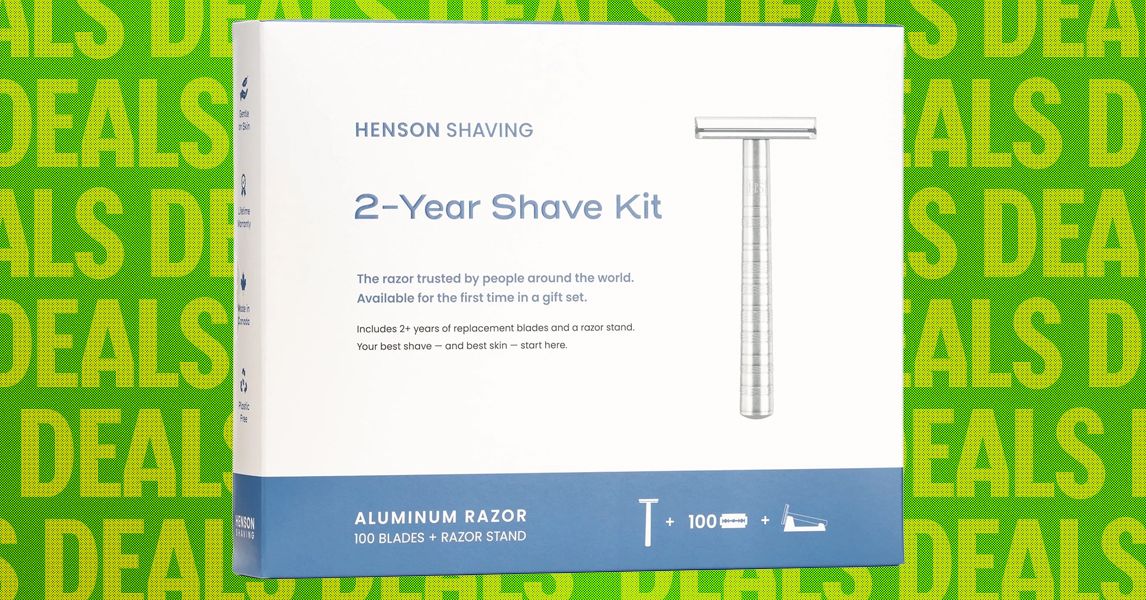Tech
Vodafone Greece automates deals for customers, saves 500 staff-days of work | Computer Weekly

Vodafone Greece claims to have saved 500 staff days a year in manual work after rolling out technology to automate previously labour-intensive marketing campaigns as it seeks to win new customers and keep its existing ones.
The telecoms company has rolled out software that allows it to send tailored deals and offers to customers based on their history and interactions with the company on its website, mobile app, in stores and in call centres.
The project has helped Vodafone Greece become one of Vodafone’s top three performing markets, decision strategy chapter lead Georgios Papadas told Computer Weekly.
Since it was founded in 1992, Vodafone Greece has acquired more than three million customers and has grown its revenues to more than €1bn. It is part of the wider Vodafone group, which operates in 21 countries, boasts 12,000 shops, and more than 350 million customers worldwide.
Vodafone as an organisation has been rolling out software supplied by Massachusetts-based Pegasystems across its business operations for some years, as part of a programme to ensure it can give its customers the same personalised offers on phones, broadband and other services, no matter how they choose to interact with the company.
Vodafone Greece began its own programme to deploy Pega’s platform in 2020. Vodafone’s Greek operation previously relied on its marketing staff to devise and run multiple marketing campaigns every month.
The campaigns covered multiple product lines including pre-paid mobile phones, fixed contract phones, broadband and television packages. However, they were often overlapping, and did not always target the right business priorities.
Vodafone Greece was also grappling with an untidy estate of sometimes inappropriate technology. It had grown through acquisitions of smaller companies over the years, leaving it with multiple databases and out-of-date software.
The company relied on IBM’s SPSS Modeler, a tool designed for data mining and analytics to model its monthly campaigns, a task it was not designed to do. It was a complex piece of software, and few people in the organisation had the knowledge to make changes to campaigns once they had been created in the tool, says Papadas.
Each campaign took three to five working days a month to develop, test and execute, and with up to 10 campaigns running a month, it was also resource intensive. If a campaign manager was off work sick or left the company, there was no backup plan. And because each campaign operated independently, monitoring and reporting on the results of campaigns was difficult.
Learning from Accenture
Vodafone Greece set its sights on building an “omni-channel” that would ensure it could communicate with customers in a consistent way no matter what communication channel they chose.
The company hired Accenture as an implementation partner to roll out Pega’s Customer Decision Hub software, while Vodafone’s own staff learned how to use the technology. Over time, Vodafone was able to take on more work in-house while reducing its dependence on Accenture. That led to significant savings in fees.
In 2020, Vodafone started a project to bring mobile phone product campaigns into Pega and began migrating data over from existing databases into the Pega platform. Its staff spent much of the first two years learning how to use the software.
By 2022, Vodafone felt confident enough to set up a dedicated Pega team to build databases and Application Programming Interfaces (APIs). The team also set about linking Vodafone’s CRM system and its customer service Chatbot, and Viber, a messaging service widely used in Greece, into Pega. Vodafone’s internal project team started with six or seven people and at its peak reached 40 or 50.
Six months later the company went live with its first campaign developed entirely by Vodafone staff, scoring an early success with a conversion rate into sales that was two or three times greater than previous campaigns.
Vodafone now manages all of its Pega work internally. “That gives us the agility, ownership and confidence” to focus on the needs of the business, says Papadas. “We have really decreased our time to market compared to how it was done by [Accenture],” he adds. “I think that has been one of the biggest successes.”
Finding the right skills
Papadas says that one of the biggest challenges of the project was finding people with the right technical skills. IT professionals with skills in Pega, a specialist technology, are difficult to find, so Papadas opted to hire people and train them from scratch.
He told recruits they had three learning curves: learning how to use Pega; learning the telecommunications industry; and learning Vodafone Greece – its people, technology and datasets.
“I describe Pega in our operation as a car,” says Papadas. “It needs to keep moving while we tweak the engine. The question is finding the right people and training them fast enough.”
The company set up a “buddy system” so that every new recruit had an experienced person to guide them. That was combined with video training and, for more technical issues, written documentation – but with a focus on real-world tasks.
The end of spam
The project means that Vodafone’s customers receive the same support no matter how they approach Vodafone, says Papadas.
In the past, a customer could receive an offer for a product from Vodafone by phone, visit a shop and receive a slightly different quote for the same product, and then be quoted a different – potentially higher – price on Vodafone’s app.

The technology also ensures that customers do not receive large numbers of spam messages. Pega has enabled Vodafone to set rules so that if a customer has received, say, a message today, or three messages in the past week, they will not be prompted with further marketing messages.
Vodafone is also able to send better targeted messages, says Papadas. For example, if the data shows there are people who never open the Vodafone app, they will be taken out of the campaign. “The success rate will be very much better,” he says. “It’s maths, not rocket science.”
What is the next best action?
The software is able to recommend the “next best action” that Vodafone call centre staff or shop assistants can take to encourage a particular customer to stay loyal or buy extra products based on that customer’s history and real-time interactions.
That tailored approach has allowed Vodafone to move away from “carpet bombing” customers with one or two standard offers in the hope they appeal to enough people.
The company is able to send real-time offers to customers on the Vodafone app. “It is the right message at the right time, and then the customer is more likely to say, ‘Okay, I will accept that’,” says Papadas.
The software, which is used by 1,000 Vodafone staff each day, also warns agents if they are at risk of going over budget by offering customers too many generous deals.
Vodafone’s deployment means that for the first time, it has a record in one database of the behaviour of its customers, which means the company can look at its transactions with each customer, across every channel, and see what messages have been sent to the customer and how they responded.
Real-time offers
Vodafone already has the ability to monitor when a customer looks at renewing their mobile phone contract, or look at deals for, say, mobile phones or TV packages – information that is fed into Pega in real time.
The next step is to offer customers real-time offers and notifications. For example, a customer looking at broadband TV packages on Vodafone’s website could receive a text or email offer to have the Disney channel included for less than the cost of buying the two packages separately.
“If you are looking at the retail price, we can come back to you with an offer which is better most of the time,” says Papadas.
“It’s about the right timing, relevance and contacting you at the right time. The offer arrives at your app, and you can activate it there and then.”
Vodafone also plans to deploy Adobe Analytics. It’s a powerful tool, he says, because, rather than messaging large volumes of customers with general offers, customers will receive targeted offers triggered by their activity on Vodafone’s website or app.
The company also has plans to harness the artificial intelligence capabilities in Pega to help it refine marketing campaigns.
Pega’s “adaptive” technology is able to “read” the behaviour of customers and “score the probability of the customer accepting the offer”.
The system gradually learns how to make small improvements to campaigns when it has enough data.
For example, Vodafone found that in one campaign, by changing its marketing strategy, it was able to make an average of 70 cents more on each sale. But with sales of this particular product line running to 10,000 a month, small improvements can add up.
Vodafone Greece also has plans to move its Pega operations from Google’s cloud platform to Pega’s cloud service, Pega Infinity, providing Vodafone with better support from Pega.
Learning from suppliers
One thing Papadas says he would do differently is have a stricter agreement with its implementation partner, Accenture, to make it clearer that Accenture’s role included training Vodafone staff as the project rolled out.
“If I was about to turn the time back, Vodafone teams would be fully included in the delivery plan, so it would be more or less a joint delivery,” he says.
Papadas says he would advise other IT professionals carrying out similar projects with a supplier, to make sure they learn from the supplier as quickly as possible.
“It’s very good to have a vendor because their expertise is essential, but make sure you learn as fast as you can from the vendor, both technically as well as [learning] the whole ecosystem to take it in-house, because then you have the power in your hands,” he says.
There is an inevitable conflict of interest with using suppliers to train in-house employees in the services they offer, says Papadas. “It’s difficult for vendors to bring the knowledge in-house because they want to sell to you; they want you to rely on them,” he adds. “I don’t blame them. I know how this works.”
How to get buy-in
Papadas says it’s important to involve people who are going to be impacted by the project together, including business experts, technology experts and the people who will be using Pega’s Customer Decision Hub to run campaigns.
“If you don’t have the people right from the beginning involved in designing, giving their input and saying what works for them, what doesn’t work for them, then it’s more difficult to get people on board,” he says.
It’s also important to have at least one person at the executive level to act as an enabler for the project, to keep the project team accountable for meeting deadlines and budgets, and most importantly to act as an “unblocker” when the project runs into hurdles.
In the case of Papadas, an executive responsible for commercial growth and Vodafone’s IT directors acted as high-level sponsors.
“Those two people were in every single review, in every point meeting to assist us or put us under the spotlight if we or the supplier were delayed,” he says. “Those two people were critical. Without them it would be more difficult to deliver.”
Vodafone held weekly reviews with the leadership team to review the project plan, what had been delivered, what had not been delivered, and what the challenges and obstacles were.
“We engaged all sides to ensure not only are they kept up to date on where their money, effort and people are, but also to assist us if there were problems,” says Papadas.
Tech
Silicon Valley Is All About the Hard Sell These Days
OpenAI CEO Sam Altman was at the center of Silicon Valley’s most visible publicity push in recent memory Monday night when he appeared on The Tonight Show. In a predictably softball interview with host Jimmy Fallon, Altman explained how ChatGPT has helped him alleviate the anxiety that comes with being a new parent.
It was a distinctly clever, if somewhat surprising, choice from Altman who has mostly kept his personal life out of the media spotlight. But Altman is a salesman, and a good salesman understands the optics of good television. So he talked about being a dad and being worried that his son—who wasn’t crawling at six months—was developing slower than other children (spoiler: he’s not). “I cannot imagine having gone through, figuring out how to raise a newborn without ChatGPT,” Altman told Fallon. “People did it for a long time, no problem. So clearly it was possible, but I have relied on it so much.”
As the fears around the future of AI continue to mount, the subtext was patently obvious: Technology can help people better understand their kids. We should welcome it. The timing of that particular message was not by mistake.
Of late, the tech establishment has gone on a charm offensive as age-verification laws sweep the US and the world, and the public backlash to AI intensifies.
Altman acknowledged as much but didn’t get into specifics during the interview. “One of the things that I’m worried about is just the rate of change that’s happening in the world right now. This is a three-year-old technology. No other technology has ever been adopted by the world this fast,” Altman said. “Making sure that we introduce this to the world in a responsible way, where people have time to adapt, to give input, to figure out how to do this—you could imagine us getting that wrong.”
Those concerns have only accelerated a concentrated campaign out of the Valley to better control the narrative, which has included everything from TV ads to pop-ups to create better brand awareness, and explain why the virtues of AI and social media, and all that it can do for people, outweigh the harms. If Silicon Valley is in its “hard tech era,” it is making an even harder sell.
The ads are everywhere you are: streaming, cable, social media. TikTok is great for dad advice. ChatGPT can teach you how to properly exercise, cook memorable dishes, or can curate an unforgettable road trip. Google wants you to “ask more of your phone” with its AI features. Anthropic—which, in a September ad spot, claimed “there’s never been a better time” for AI—is even hosting pop-ups and selling merch. Meta promises to be your personal AI for, well, everything.
Tech
Get (or Gift) 2 Years of Spectacular Shaves for $80 Right Now

Razors are one of the most heavily and competitively marketed products in American capitalism. Made with steel and plastic that costs a few pennies, but sold for a thousand percent profit, the razor market is the subject of vigorous academic study and debate.
The founder of Gillette famously came up with a model of basically giving away the razor handle so he could sell the blades. Canadian startup Henson has the opposite model, charging $79 for a razor that can give you an excellent shave with dirt-cheap disposable blades that cost about 15 cents each.
I’ve been using the Henson razor for the past three months, and it offers the best shave I’ve had up to this point in my life. Right now, Walmart is selling the device with enough blades to last you two years for just $80. Razors are always a popular Christmas gift for fathers, and this deal would fit nicely under your tree.
Henson is a Canadian company with roots in aerospace, having contributed components to the Mars rover. The AL13 Safety Razor is made from aluminum machined at their shop in Ontario. It comes in a half-dozen colors, including the classic copper I’ve tested.
The razor’s head is two parts that dovetail together and are then compressed using the screw-on handle. The handle holds the blade in place with extreme rigidity at a precise angle so the blade doesn’t chatter around, which can cause skin irritation. The blade barely sticks out from the head, with an edge only about half the width of a hair exposed—you’ll have to look very closely to see it.
The Henson razor is manufactured with exacting tolerances of 0.00025 of an inch, or about one-twelfth the thickness of a human hair. There are no plastic parts, just aluminum with stainless steel bushings. Henson specifically designed its device to work with cheap, generic double-edged blades that sell for ten or 15 cents each—the difference here is how firmly and precisely those blades are held in place.
I’ve been using the Henson for about two months now and have never had better shaves. I shave about every other day, and each blade lasts me about a week, meaning the 100-pack included here will last you two years. The shave is very close but smooth, and I’ve only barely nicked myself a few times in that span. (The company has paid for medical imaging that shows its razors cause one-third the skin irritation you get from multi-blade razors.) The company sent me its proprietary $20 shaving cream, which I somehow misplaced before ever using, but I have had extremely crisp and clean shaves with a $4 can of regular Gillette foam.
The one tip I have is that you get the best results if you unscrew the handle a bit when rinsing the blades between uses, as shaved hairs otherwise tend to get stuck in the space between components and don’t easily rinse out.
Did I mention it’s a very handsome razor? It is, with a machined handle that has a texture that looks good and also provides a nice, gritty grip when wet. If you’re looking to gift a grooming device—or just want to treat yourself—the Henson at this price is a great buy.
Tech
Jennifer Lewis ScD ’91: “Can we make tissues that are made from you, for you?”

“Can we make tissues that are made from you, for you?” asked Jennifer Lewis ScD ’91 at the 2025 Mildred S. Dresselhaus Lecture, organized by MIT.nano, on Nov. 3. “The grand challenge goal is to create these tissues for therapeutic use and, ultimately, at the whole organ scale.”
Lewis, the Hansjörg Wyss Professor of Biologically Inspired Engineering at Harvard University, is pursuing that challenge through advances in 3D printing. In her talk presented to a combined in-person and virtual audience of over 500 attendees, Lewis shared work from her lab that focuses on enhanced function in 3D printed components for use in soft electronics, robotics, and life sciences.
“How you make a material affects its structure, and it affects its properties,” said Lewis. “This perspective was a light bulb moment for me, to think about 3D printing beyond just prototyping and making shapes, but really being able to control local composition, structure, and properties across multiple scales.”
A trained materials scientist, Lewis reflected on learning to speak the language of biologists when she joined Harvard to start her own lab focused on bioprinting and biological engineering. How does one compare particles and polymers to stem cells and extracellular matrices? A key commonality, she explained, is the need for a material that can be embedded and then erased, leaving behind open channels. To meet this need, Lewis’ lab developed new 3D printing methods, sophisticated printhead designs, and viscoelastic inks — meaning the ink can go back and forth between liquid and solid form.
Displaying a video of a moving robot octopus named Octobot, Lewis showed how her group engineered two sacrificial inks that change from fluid to solid upon either warming or cooling. The concept draws inspiration from nature — plants that dynamically change in response to touch, light, heat, and hydration. For Octobot, Lewis’ team used sacrificial ink and an embedded printing process that enables free-form printing in three dimensions, rather than layer-by-layer, to create a fully soft autonomous robot. An oscillating circuit in the center guides the fuel (hydrogen peroxide), making the arms move up and down as they inflate and deflate.
From robots to whole organ engineering
“How can we leverage shape morphing in tissue engineering?” asked Lewis. “Just like our blood continuously flows through our body, we could have continuous supply of healing.”
Lewis’ lab is now working on building human tissues, primarily cardiac, kidney, and cerebral tissue, using patient-specific cells. The motivation, Lewis explained, is not only the need for human organs for people with diseases, but the fact that receiving a donated organ means taking immunosuppressants the rest of your life. If, instead, the tissue could be made from your own cells, it would be a stronger match to your own body.
“Just like we did to engineer viscoelastic matrices for embedded printing of functional and structural materials,” said Lewis, “we can take stem cells and then use our sacrificial writing method to write in perfusable vasculature.” The process uses a technique Lewis calls SWIFT — sacrificial writing into functional tissue. Sharing lab results, Lewis showed how the stem cells, differentiated into cardiac building blocks, are initially beating individually, but after being packed into a tighter space that will support SWIFT, these building blocks fuse together and become one tissue that beats synchronously. Then, her team uses a gelatin ink that solidifies or liquefies with temperature changes to print the complex design of human vessels, flushing away the ink to leave behind open lumens. The channel remains open, mimicking a blood vessel network that could have fluid actively, continuously flowing through it. “Where we’re going is to expand this not only to different tissue types, but also building in mechanisms by which we can build multi-scale vasculature,” said Lewis.
Honoring Mildred S. Dresselhaus
In closing, Lewis reflected on Dresselhaus’ positive impact on her own career. “I want to dedicate this [talk] to Millie Dresselhaus,” said Lewis. She pointed to a quote by Millie: “The best thing about having a lady professor on campus is that it tells women students that they can do it, too.” Lewis, who arrived at MIT as a materials science and engineering graduate student in the late 1980s, a time when there were very few women with engineering doctorates, noted that “just seeing someone of her stature was really an inspiration for me. I thank her very much for all that she’s done, for her amazing inspiration both as a student, as a faculty member, and even now, today.”
After the lecture, Lewis was joined by Ritu Raman, the Eugene Bell Career Development Assistant Professor of Tissue Engineering in the MIT Department of Mechanical Engineering, for a question-and-answer session. Their discussion included ideas on 3D printing hardware and software, tissue repair and regeneration, and bioprinting in space.
“Both Mildred Dresselhaus and Jennifer Lewis have made incredible contributions to science and served as inspiring role models to many in the MIT community and beyond, including myself,” said Raman. “In my own career as a tissue engineer, the tools and techniques developed by Professor Lewis and her team have critically informed and enabled the research my lab is pursuing.”
This was the seventh Dresselhaus Lecture, named in honor of the late MIT Institute Professor Mildred Dresselhaus, known to many as the “Queen of Carbon Science.” The annual event honors a significant figure in science and engineering from anywhere in the world whose leadership and impact echo Dresselhaus’ life, accomplishments, and values.
“Professor Lewis exemplifies, in so many ways, the spirit of Millie Dresselhaus,” said MIT.nano Director Vladimir Bulović. “Millie’s groundbreaking work, indeed, is well known; and the groundbreaking work of Professor Lewis in 3D printing and bio-inspired materials continues that legacy.”
-

 Entertainment1 week ago
Entertainment1 week agoSadie Sink talks about the future of Max in ‘Stranger Things’
-

 Fashion1 week ago
Fashion1 week agoResults are in: US Black Friday store visits down, e-visits up, apparel shines
-

 Tech1 week ago
Tech1 week agoPrague’s City Center Sparkles, Buzzes, and Burns at the Signal Festival
-

 Business1 week ago
Business1 week agoCredit Card Spends Ease In October As Point‑Of‑Sale Transactions Grow 22%
-

 Business1 week ago
Business1 week agoKey Financial Deadlines That Have Been Extended For December 2025; Know The Last Date
-

 Fashion1 week ago
Fashion1 week agoModella eyeing another acquisition, this time it’s the Wynsors footwear chain
-

 Tech1 week ago
Tech1 week agoHow to build a data dream team | Computer Weekly
-

 Tech1 week ago
Tech1 week agoI Test Amazon Devices for a Living. Here’s What to Buy This Cyber Monday Weekend






